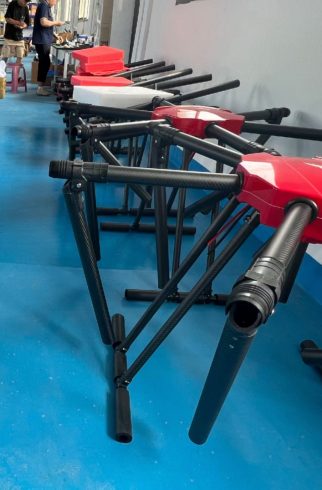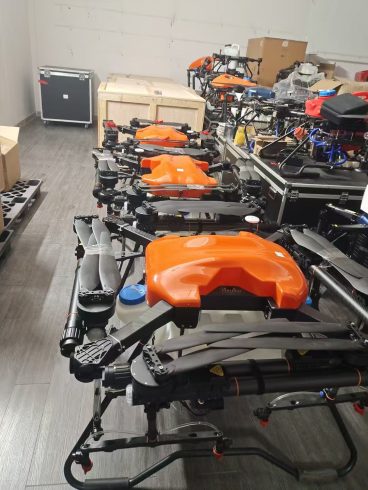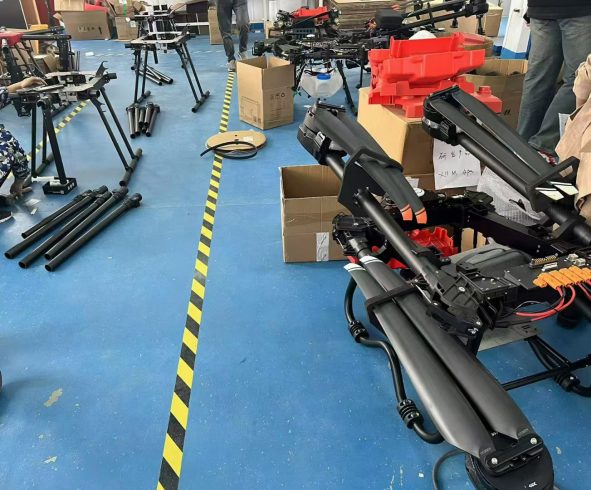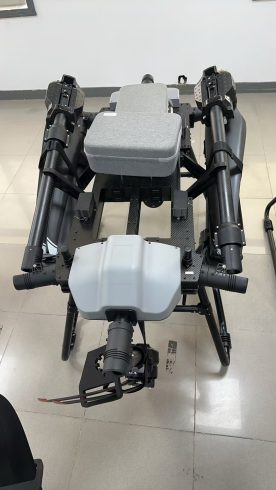![图片[1]-Precision Weed Warfare: How Drone Spraying is Revolutionizing Agricultural Weed Control-msoen](https://www.msoen.com/wp-content/uploads/2025/04/3ea0601715184639-1024x768.jpg)
![图片[2]-Precision Weed Warfare: How Drone Spraying is Revolutionizing Agricultural Weed Control-msoen](https://www.msoen.com/wp-content/uploads/2025/04/edbbb52c8b184639-1024x576.jpg)
![图片[3]-Precision Weed Warfare: How Drone Spraying is Revolutionizing Agricultural Weed Control-msoen](https://www.msoen.com/wp-content/uploads/2025/04/5bb323e000184638-674x1024.jpg)
Meta Description: Discover how drone sprayers are transforming weed management in farming through precision targeting, reduced chemical use, and cost-effective solutions. Learn about AI-driven technologies and sustainable practices reshaping modern agriculture.
Precision Weed Warfare: How Drone Spraying is Revolutionizing Agricultural Weed Control
Weed infestation remains one of the most persistent threats to global crop yields, costing farmers billions annually in lost productivity and herbicide expenses. Traditional methods like manual weeding, broadcast spraying, and mechanical tillage are labor-intensive, environmentally damaging, and increasingly ineffective against herbicide-resistant “superweeds.” Enter drone sprayers—a cutting-edge solution that combines artificial intelligence, precision agriculture, and agile aerial technology to target weeds with surgical accuracy. This article explores how drones are redefining weed control, offering scalable, eco-friendly alternatives to conventional practices.
The Growing Weed Crisis
Modern agriculture faces a dual crisis:
- Herbicide Resistance: Over-reliance on glyphosate and other chemicals has spawned weeds resistant to 37+ herbicide modes of action.
- Sustainability Pressures: Regulatory bodies are tightening restrictions on chemical use, while consumers demand residue-free produce.
Traditional weed control methods struggle to adapt:
- Broadcast Spraying: Wastes 60–80% of chemicals through overspray, polluting soil and waterways.
- Manual Weeding: Costs $300–500/ha and is impractical for large-scale farms.
- Mechanical Tillage: Accelerates soil erosion and fuel costs.
Drones offer a precision-driven alternative, minimizing chemical use while maximizing efficacy.
How Drone Sprayers Target Weeds with Surgical Precision
- AI-Powered Weed Detection
Drones equipped with hyperspectral cameras and machine learning algorithms identify weeds in real time:
- Multispectral Imaging: Detects chlorophyll variations to distinguish weeds from crops.
- Object Recognition: Classifies weed species (e.g., Palmer amaranth, ryegrass) to tailor herbicide applications.
- Density Mapping: Generates heatmaps highlighting high-pressure zones for targeted intervention.
Early trials show a 90% reduction in herbicide use when pairing drones with AI weed detection.
- Variable-Rate Spraying Technology
Unlike conventional sprayers, drones adjust chemical output dynamically:
- Nozzle Pulsing: Applies micro-doses (1–5 mL/sq.m) only where weeds exist.
- Directional Nozzles: Concentrates spray on target plants while avoiding crop canopies.
- Real-Time Calibration: Adjusts flow rates based on wind speed and plant height.
This precision cuts herbicide costs by 50–70% and reduces environmental harm.
- Swarm Farming for Large-Scale Efficiency
Fleets of autonomous drones work in sync to treat expansive fields overnight:
- Coverage Rates: A swarm of 10 drones can treat 500 ha/day, outpacing ground crews.
- 24/7 Operation: Works around the clock, even in adverse weather.
Case Study: Drones vs. Palmer Amaranth in Soybean Farms
A 2023 pilot project in the U.S. Midwest demonstrated drone sprayers’ potential:
- Problem: Palmer amaranth resistant to glyphosate infested 80% of soybean fields.
- Solution: Drones with AI weed detection applied dicamba only to infested patches.
- Result:
- Herbicide use reduced by 65%.
- Soybean yield increased by 12% due to healthier plants.
- Labor costs slashed by 80%.
Overcoming Adoption Challenges
While promising, drone weed control faces hurdles:
- Regulatory Hurdles: Airspace restrictions and herbicide application permits vary globally.
- Initial Costs: High-end drones cost $20,000–50,000, though ROI is achievable within 2–3 seasons.
- Technology Gaps: Smallholder farms lack access to AI software and maintenance support.
Solutions:
- Government Grants: Programs like the USDA’s Environmental Quality Incentives Program (EQIP) subsidize precision ag tech.
- Cloud-Based Platforms: Affordable SaaS models (e.g., AgriWebb) democratize AI weed analysis.
- Battery Leasing: Shared-energy systems reduce upfront costs for rural farmers.
The Future of Weed Control with Drones
Emerging innovations promise even greater impact:
- Autonomous Herbicide Drones: Self-guided systems with obstacle avoidance for zero-human intervention.
- Bioherbicide Delivery: Drones spraying mycoherbicides (fungal pathogens) to target weeds organically.
- Blockchain Traceability: Recording spray data to comply with ESG reporting standards.
Conclusion
Drone sprayers are not just a technological leap—they’re a paradigm shift in weed management. By targeting weeds with unmatched precision, these devices empower farmers to combat herbicide resistance, cut costs, and preserve ecosystems. As AI and swarm technologies mature, drone-based weed control will transition from niche innovation to agricultural standard practice. For forward-thinking farmers, adopting drone sprayers isn’t just an option—it’s a strategic imperative to future-proof yields and profitability.












暂无评论内容